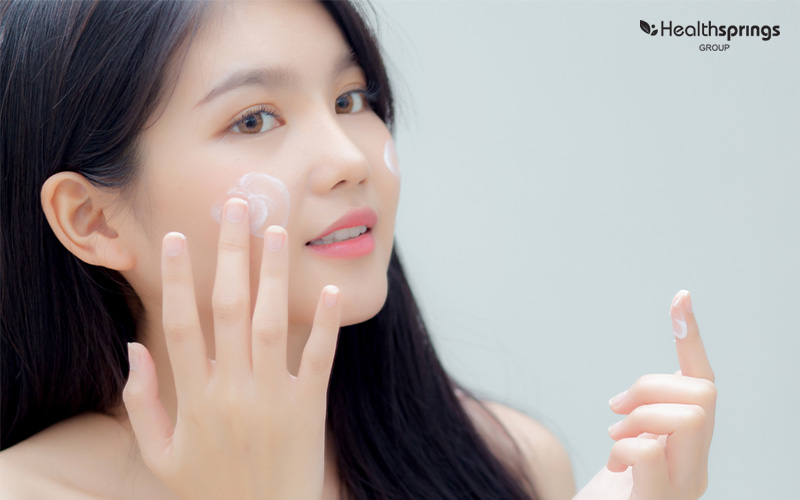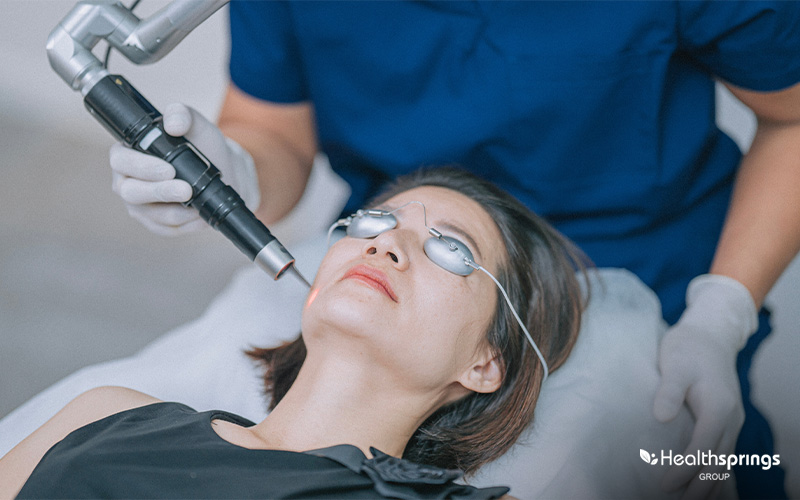Pigmentation on the skin can hinder those on a journey towards unlocking a flawless complexion. The unwelcomed dark spots, patches, and even acne scars can be extremely difficult to remove. Fortunately, if you’re struggling with these issues, there are many solutions you can turn to. If you’ve ever wondered how to remove pigmentation from face permanently, this article explores the causes of hyperpigmentation and possible treatment approaches that may help.
How Pigmentation Differs from Dark Spots and Scars
Understanding the difference between pigmentation and dark spots is essential in selecting the right treatment. Pigmentation refers to the coloring of the skin caused by melanin production, which can appear as freckles, sunspots, or melasma. Dark spots are more localised areas of hyperpigmentation, often caused by sun exposure or hormonal changes. Scars, on the other hand, are permanent changes to skin texture resulting from acne, inflammation or injuries. Identifying which condition you’re dealing with helps determine the next step for treatment.
Types of Hyperpigmentation
Hyperpigmentation can manifest in various forms, including:
- Sun-induced (Solar Lentigines): Dark spots caused by sun exposure.
- Post-inflammatory Hyperpigmentation: Darkening of the skin after inflammation or injury.
- Melasma: Hormonally induced pigmentation often seen in pregnant women or those on birth control.
- Freckles: Small, concentrated areas of increased melanin production usually genetic or sun-induced.
1. Topical Treatments

Topical solutions containing vitamin C or retinoids have gained significant popularity for their ability to target and alleviate skin discolouration.
-
Vitamin C
Apart from boosting our immune system and being a powerful antioxidant, vitamin C also supports overall skin health and plays a crucial role in fading hyperpigmentation.
Here’s what vitamin C does:
-
- Inhibits tyrosinase, an enzyme responsible for melanin production, preventing the formation of dark spots while evening out skin tone
- Neutralises free radicals generated by UV radiation and environmental pollutants, protecting the skin from further damage caused by sun exposure
- Stimulates collagen production to aid in skin repair and regeneration
- Improves skin texture and quality
When looking for a product containing vitamin C for pigmentation, get a high-quality one with at least 10% of vitamin C in it. Apply it every night after cleansing and toning, and follow up with sunscreen if you’re applying it in the day as vitamin C can make your skin more sensitive to UV rays.
-
Retinoids
Also capable of reducing pigmentation, retinoids are a group of compounds derived from vitamin A that can be used to address many other skin concerns like acne and psoriasis.
Here’s what they do:
-
- Accelerate the process of skin cell turnover by shedding the topmost layer of skin and replacing it with newer, evenly pigmented cells
- Stimulate collagen production to improve overall skin texture and reduce the appearance of fine lines and pigmentation
As retinoids can make your skin sensitive to sunlight too, make sure to only apply them at night and to wear sunscreen during the day. If you’ve never applied retinoids to your skin before, start with a lower concentration product to allow your skin to adjust to it.
2. Chemical Peels
Chemical peels for pigmentation employ chemical solutions to remove the top layer of damaged skin and encourage skin regeneration. This approach reveals a fresher and more even-toned complexion.
While the term “chemical” sounds frightening, the ingredients in these peels are usually mild and not overly abrasive for the human skin. They usually contain low amounts of acids safe for your skin—glycolic acid, alpha hydroxy acids (AHAs), beta hydroxy acids (BHAs), or trichloroacetic acid (TCA)—that work by breaking down the bonds between dead skin cells and stimulating collagen and elastin production. This helps to remove pigmented, damaged skin cells and improve skin texture.
We do not recommend conducting chemical peels yourself as your skin will need to be properly prepared and the procedure must be performed carefully to maximise results and minimise the risk of adverse reactions. Do consult with a dermatologist or an aesthetic specialist if you’re planning to get a chemical peel.
3. Laser Treatments

An increasingly popular method for addressing facial pigmentation issues like dark spots and acne scars is laser treatments. The wide range of options offer various solutions to those who want to improve their skin tone and texture:
-
Revlite Q-Switch Laser
Revlite laser treatments break down pigments in your skin into tiny particles using multiple laser wavelengths. They are then removed by your body’s natural filtering system, removing or lightening the pigmentation. This option can be used to reduce acne scars, stimulate collagen synthesis, and maintain the skin’s youthful character.
Learn More: Aesthetic Treatments in Singapore to Help You Look Younger
-
Pro Yellow Laser
The pro yellow laser treatment employs a laser wavelength of just 577 nm to safely address issues such as pigmentation, rosacea, and uneven skin tone. When the laser hits the skin, its energy is absorbed by melanin and the underlying blood vessels. This breaks down the pigments and reduces blood supply to the skin cells that cause these pigmentation.
-
Forever Young BBL
The BroadBand Light (BBL) technology in Forever Young BBL pigmentation treatments gently heat up the upper layers of your skin to stimulate your skin cells to generate new collagens. After absorbing the light, the pigmented spots will become fragmented and flake off from the skin surface in a few days. BBL also does other things to your skin, including:
-
- Eliminate fine vessels and veins that cause redness
- Eliminate unwanted melanin responsible for pigmentation
- Delay the ageing process
- Alter skin cell DNA to reverse them back to a younger and healthier state
-
Fotona Er: YAG Laser
Fotona laser is a non-invasive option that uses laser wavelengths and four treatment modes to tighten skin, reduce wrinkles, treat acne, scarring, and spider veins. It penetrates the deeper, medial, and superficial connective structures of the skin for ideal and lasting collagen remodelling, as well as permanent pigmentation removal.
-
Pico Laser
The pico-second technology in pico laser treatments releases pigmentation-removal laser energy beams that penetrate deep into the skin. It brightens and whitens skin for a radiant glow, improves uneven skin tone, minimises pores, and stimulates collagen production. This gives you a smooth and clear complexion.
Interested in removing pigmentation with lasers? Healthsprings is a laser and aesthetic clinic in Singapore that offers a wide range of solutions for a variety of skin concerns. Journey to healthier-looking skin by booking your appointment with us here.
Home Care Tips & Pigmentation Prevention
Treating pigmentation doesn’t end with in-clinic treatments. Proper aftercare and daily routines play a big role in keeping your skin healthy and supporting longer-lasting results. Here’s how to complement your treatments and prevent melasma in Singapore, while learning how to how to prevent pigmentation from returning:
Sun Protection (Broad Spectrum + Reapplication)
Sun exposure is one of the top triggers for pigmentation. Always apply a broad-spectrum sunscreen with SPF 30 or higher, and reapply every 2–3 hours—especially if you’re outdoors. Wearing a wide-brimmed hat or using a UV umbrella offers extra protection. Post-laser care often includes avoiding direct sunlight to prevent skin sensitivity or recurrence.
Lifestyle Factors (Diet, Sleep, Blue Light Exposure)
Getting enough rest and maintaining a balanced diet with antioxidant-rich foods can support skin recovery. Limiting screen time or using blue light filters may also help reduce melanin stimulation from digital devices, a growing concern for those living in Singapore’s tech-savvy environment.
Consistent Skincare Routine
Gentle cleansing, hydration, and the continued use of dermatologist-approved serums or creams, like those containing niacinamide, vitamin C, or azelaic acid, can reinforce your skin barrier and keep pigmentation at bay between treatments.
FAQs about Pigmentation
What causes pigmentation issues?
Pigmentation problems can arise from various factors, including sun exposure, hormonal changes, genetics, and skin inflammation.
Are pigmentation treatments permanent?
While pigmentation treatments can significantly reduce the appearance of pigmented lesions, maintenance treatments may be necessary to prevent recurrence.
Is laser treatment safe for pigmentation?
Laser treatments are used by many to address pigmentation concerns. When performed by a licensed medical professional, the procedure is conducted under regulated conditions to support skin recovery and minimise risks. Individual skin types and concerns vary, so a consultation is required to determine suitability.
How long does it take to see results from pigmentation treatments?
Results from pigmentation treatments vary depending on the severity of the condition and the chosen treatment modality but noticeable improvements can often be seen after a few sessions.
What’s the difference between fading pigmentation and removing it permanently?
Fading refers to lightening pigmented areas over time with topical or procedural methods. But if you’re looking at how to remove pigmentation from your face permanently, it may be possible, depending on the root cause and treatment consistency. Regular aftercare is important in helping to maintain the results.
